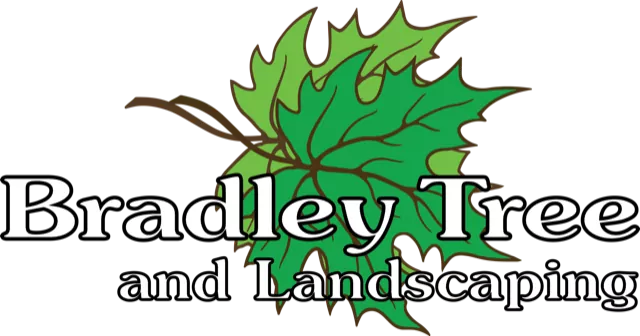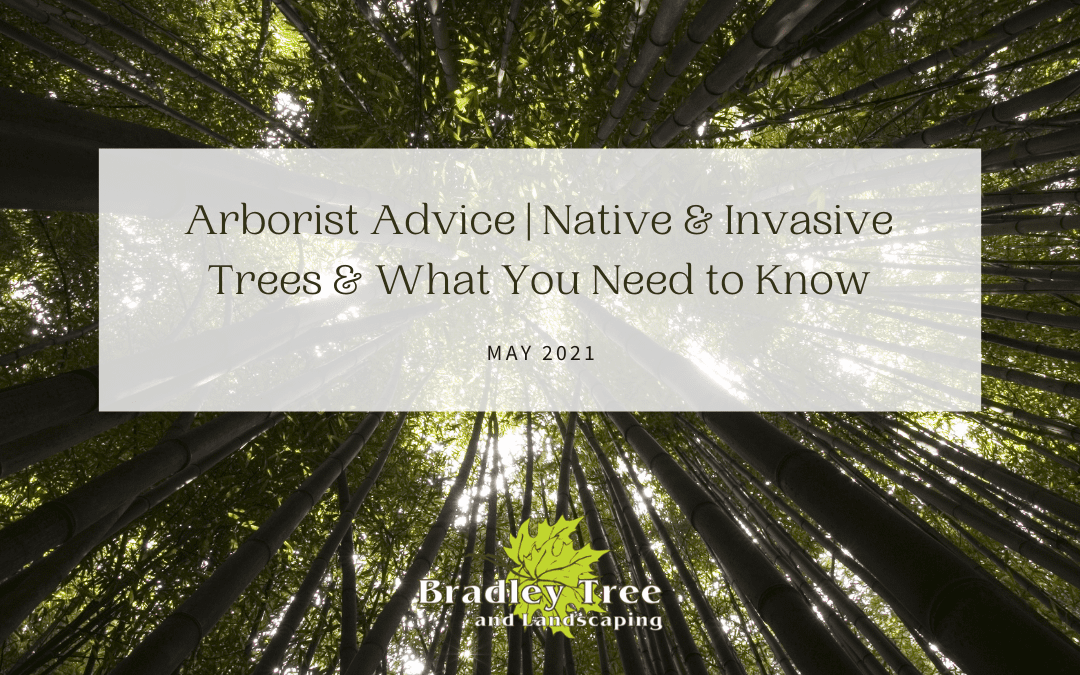Have you ever wondered what tree species are native to our Buffalo, NY region and which are invasive? Maybe you’ve just now wondered “what, there are invasive trees? How? I thought they were good!?” While it is true that trees are good, there are indeed some invasive species in the area. Our expert arborists at Bradley Trees know which from which, how to remove those pesky invaders, and will be glad to assist you in that removal.
Are Invasive Trees really a concern?
Invasive species depress the biodiversity of the area, oftentimes outcompeting and starving off their native counterparts. Think about it, a particular tree may have undergone millions of years of evolution to thrive on little water content. If someone brings it to Buffalo all of a sudden it has all the water it needs to sprout, grow and spread. Or just generally, trees are tall and invasive species cut off sunlight access to ground-level plants.
Native plants have evolved to coexist in the environment, while invasive plants hijack the ecosystem and take over. It will encroach on land and overshadow its local counterparts, suffocating them to the endangered species list in a worst-case scenario.
What trees are native to Buffalo, NY?
There’s a variety of native tree species in the region; we have woodland trees, like the Red Maple, Tulip Trees, American Basswoods, Horphornbeams, and American Beech. Then there are the more wetlands trees that prefer moist soil like the Paw Paw, River Birch, American Larch, Swamp White Oak, Pin Oak, and Arborvitae.
There are others too, like the American Hornbeam and Eastern Redbud that can grow both in woodlands and in wetter areas like stream banks, Hackberries which are found in floodplains and open woods, Flowering Dogwoods which are beautiful flowering trees, and of course the trees that love the mountains like Eastern White Pines and Eastern Hemlocks.
Identifying Popular Native WNY Trees
Red Maple – Characterized by its strikingly vibrant red flowers, seeds and leaves. In the fall, the leaves gain an additional yellow hue.
Tulip Trees – We wrote up a whole thing on Tulip Trees here, but the sparknotes are: Its flowers are shaped like tulips, and it’s one of the tallest and sturdiest hardwoods in the Northeast.
Flowering Dogwood – We also have a planting guide up for Dogwoods here that goes more into the detail of identification. However, they’re identified by their crisp, white spring flowers that fade into a red foliage covering in the fall.
Oaks – Swamp White and Pin Oak trees are characterized by their deep green leaves with white undersides, and more vibrant, pointed leaves, respectively. Swamp White Oak leaves will turn more of a brown color in the fall, and Pin Oak leaves will turn more red. Bur Oaks are rangy and have large, dark, glossy leaves and almost fuzzy acorn caps.
Eastern White Pine – A tall, rapidly growing evergreen tree. Its needles are soft and brush-like.
White Spruce – A classic Christmas tree conifer shape is the calling card of this tree. Its needles are stiff and blueish-green. Its mature height is about half of the Pine.
What are invasive trees? Why should it matter?
In Western New York, we have seen many local plant species die off or be reduced to a fraction of their previous coverage at least in part because of these invasive pests. There’s the Common Buckthorn, a small tree species that rapidly grows and creates a monoculture, out-competing native plants and potentially altering soil pH.
There’s also European Black Alders, a large tree species that can grow densely and rapidly, displacing and shading out local ground-level plants, and can occupy poor soil conditions ensuring nothing else will grow there.
Last but not least is the so-called Tree of Heaven, a tall-growing tree whose leaves release a disturbing smell when crushed, has sap that can cause allergic reactions and even heart problems from prolonged exposure, and its complex root system can and does cause damage to underground infrastructure and building foundations.
Identifying Invasive WNY Trees
That’s a lot of adverse outcomes and consequences for keeping these particular invasive species around. But how do you identify them? Lets go over that, too.
Common Buckthorn – This woody shrub can easily grow up to 20ft tall, and has a dark bark with lenticels (small, horizontal markings), small, clustered flowers; pea-sized fruit changing from green, to red, to black when ripe that can remain through winter.
European Black Alder – 40 to 60ft tall tree species with large, oval-shaped, glossy green leaves with toothed margin and indented leaf tips. Cylindrical flowers appear before leaves drop. Also has cone-like fruit in the fall.
Tree of Heaven – Incredibly tall, rapidly growing tree species. Bark almost resembles a cantaloupe and has leaf scars. From WNYPrism.org “Leaflets (individual leaves) are 3 – 5 inches long and 1 – 2 inches wide, each with characteristic glandular “teeth” or bumps located at the base.” Flowers are yellowish and arrive in early Summer, growing in large swaths together.
Remember, proper identification of these invasive trees is a key part in their removal so that our tree species native to the Buffalo region can survive. This isn’t an exhaustive list of invasive tree and plant species to the region, keep an eye out on the blog for deeper dives into that specific content, but this does cover some of the most common.
If you’re thinking about planting a new, native tree then you should call our professional tree planting service to make sure that the tree gets the nutrition it needs. If you have one of these invasive tree species, you should call an ISA-Certified arborist right away to have that tree removed and disposed of properly.
“Our best customer is an educated customer”
Jared Webber
Let us help you!
Having a true arborist help you with these decisions may not seem like a necessity, but there are a lot of factors to consider. You can count on new blogs coming out each month to help educate the WNY community on all things only an arborist would know, but it’s always best to get in touch with a professional to take a look. You can also check out our Facebook and YouTube pages for more arbor info!
Here at Bradley Trees, we go to great heights to please you. For any questions for our Buffalo certified arborists, please reach out via our contact form or give us a call at 716.916.2193 for a first FREE tree consultation.
Updated 3/2/2022


Are Norway Spruce native to WNY? It is being proposed for our property in the Town of Evans.
thanks
Michele Coleman
michele.m.coleman@gmail.com